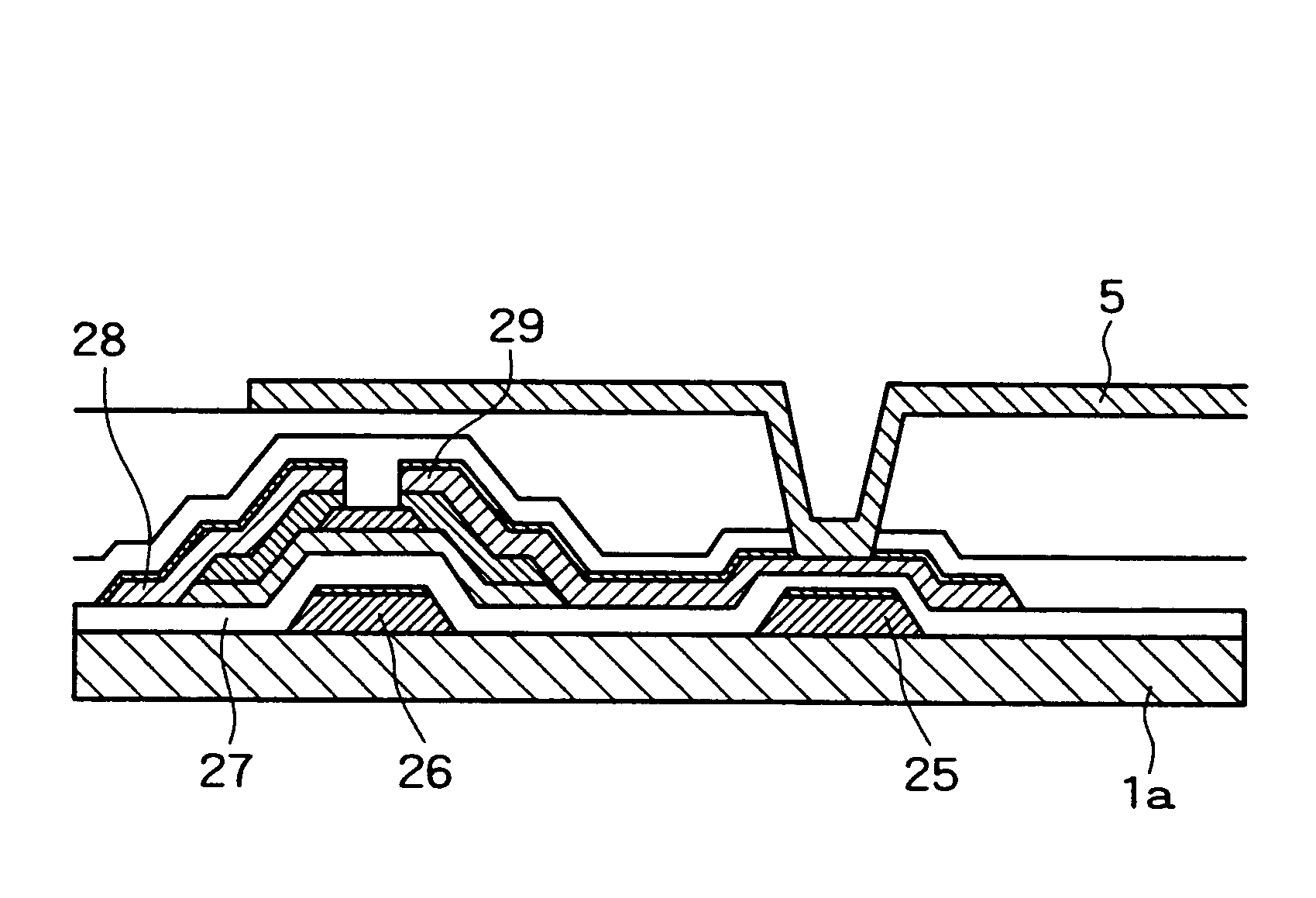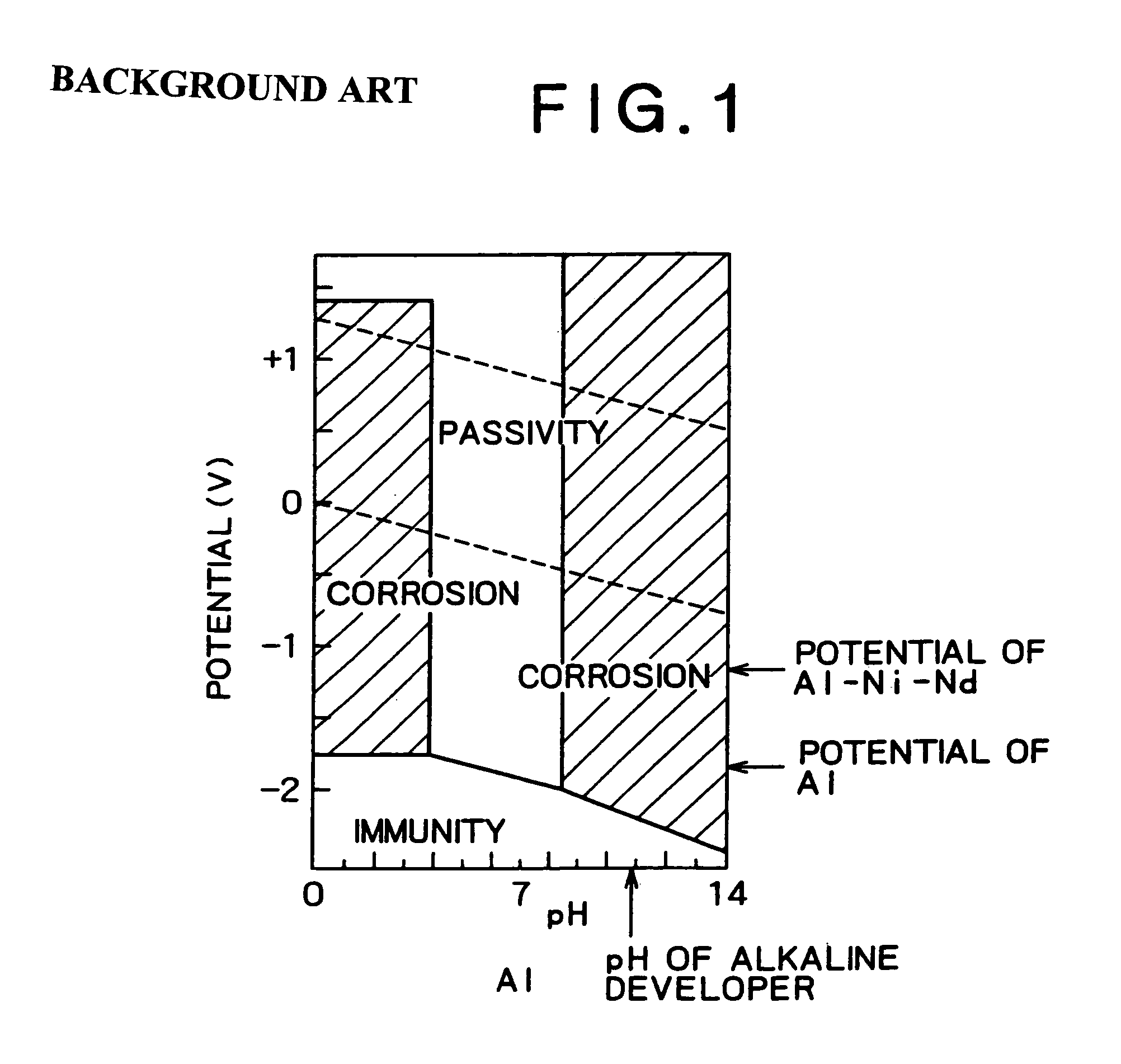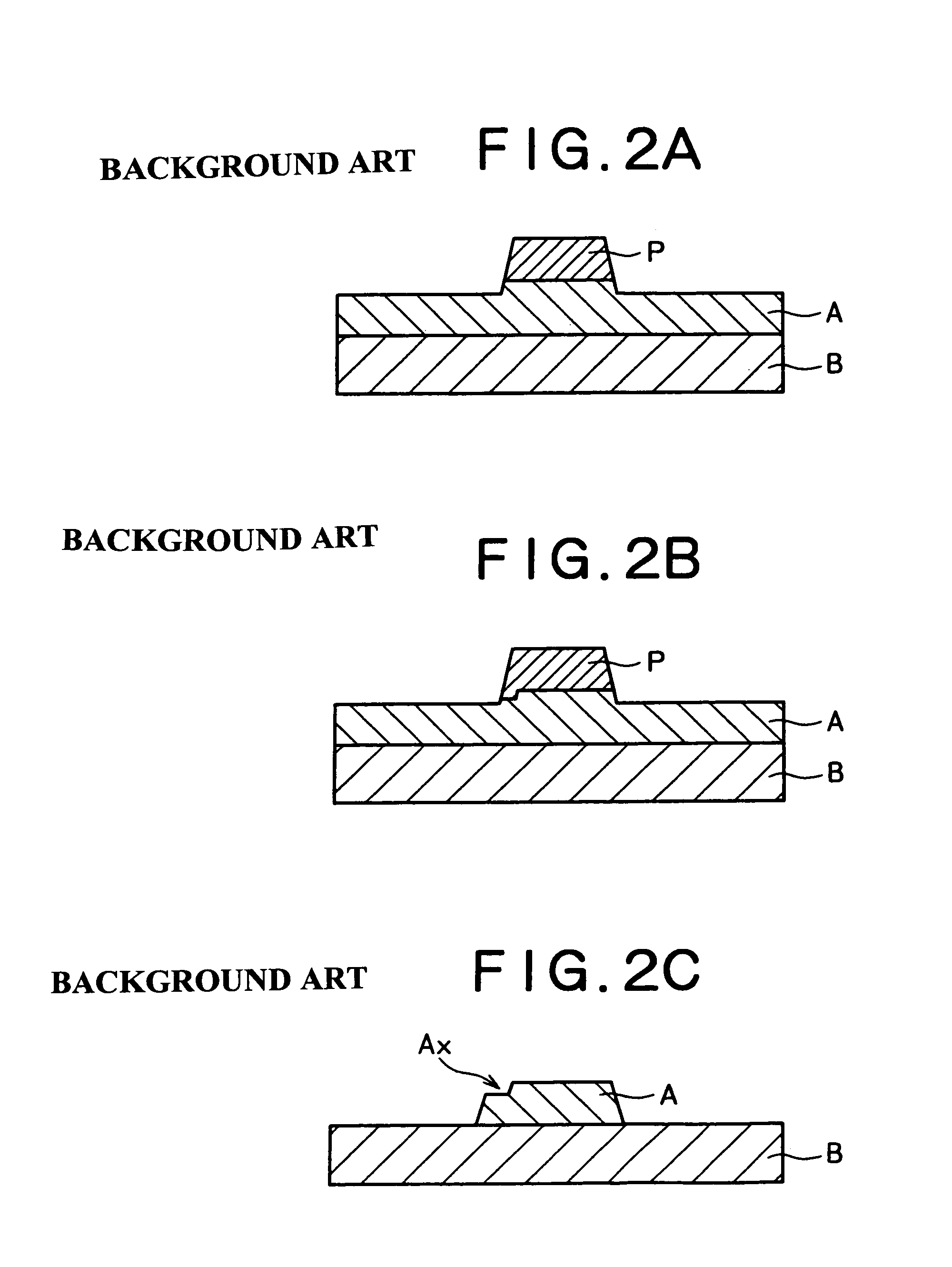Display device
a display device and thin technology, applied in static indicating devices, instruments, sport apparatuses, etc., can solve the problems of inability to allow an alloy mainly containing aluminum to have such a high potential, inherently not so resistant to pure aluminum, and significant galvanic corrosion caused by local cell phenomenon, etc., to achieve effective manufacturing of display devices, high chemical resistance, and simple manufacturing process
- Summary
- Abstract
- Description
- Claims
- Application Information
AI Technical Summary
Benefits of technology
Problems solved by technology
Method used
Image
Examples
examples
[0117]The present invention will be illustrated in further detail with reference to several examples below, which are not intended to limit the scope of the present invention.
[0118]The contact resistance in direct contact between aluminum alloy wirings and the pixel electrode 5 on the array substrate according to the present invention was determined. The results are shown in Table 1.
[0119]The determination was carried out in the following manner.
[0120]1) Configuration of the pixel electrode: Indium tin oxide (ITO) comprising indium oxide and 10 percent by weight of tin oxide and having a thickness of 200 nm, or indium zinc oxide (IZO) comprising indium oxide and 10 percent by weight of zinc oxide and having a thickness of 200 nm
[0121]2) Configuration of the aluminum alloy film: The contents of the alloy components are shown in Table 1.
[0122]3) Conditions for heat treatment: A dielectric film (SiNx) was formed to a thickness of 300 nm, and the work was subjected to heat treatment at ...
examples 1 and 2
[0127]A silicon wafer bearing an oxide film (SiO2 thermally grown oxide film) 400 nm on its surface for establishing insulation of the substrate was used instead of the glass substrate. A nitrogen-free aluminum alloy film 300 nm thick was formed on the silicon wafer, a nitrogen-containing aluminum alloy film 30 nm thick was formed thereon to form a multilayer aluminum alloy film, the multilayer aluminum alloy film was patterned, and a dielectric film (SiNx) 300 nm thick was formed by chemical vapor deposition (CVD). The work was as intact subjected to heat treatment in a vacuum film-forming chamber for one hour and was taken out. A 80-μm square contact hole was patterned by photolithography, followed by etching with fluorine-containing plasma to thereby form a contact hole. In this procedure, overetching about 100% in terms of time was carried out in addition to the etching of the dielectric film. This treatment removed about 35 nm thick (about 11% of the film thickness) of the surf...
PUM
| Property | Measurement | Unit |
|---|---|---|
| thickness | aaaaa | aaaaa |
| standard electric potential | aaaaa | aaaaa |
| standard electric potential | aaaaa | aaaaa |
Abstract
Description
Claims
Application Information
 Login to View More
Login to View More - R&D
- Intellectual Property
- Life Sciences
- Materials
- Tech Scout
- Unparalleled Data Quality
- Higher Quality Content
- 60% Fewer Hallucinations
Browse by: Latest US Patents, China's latest patents, Technical Efficacy Thesaurus, Application Domain, Technology Topic, Popular Technical Reports.
© 2025 PatSnap. All rights reserved.Legal|Privacy policy|Modern Slavery Act Transparency Statement|Sitemap|About US| Contact US: help@patsnap.com



